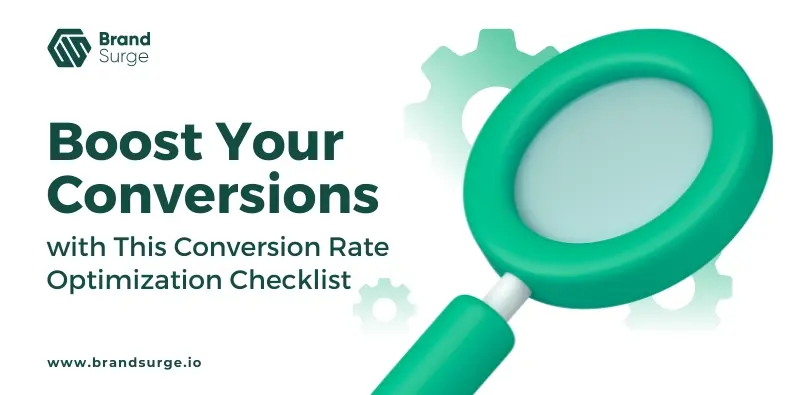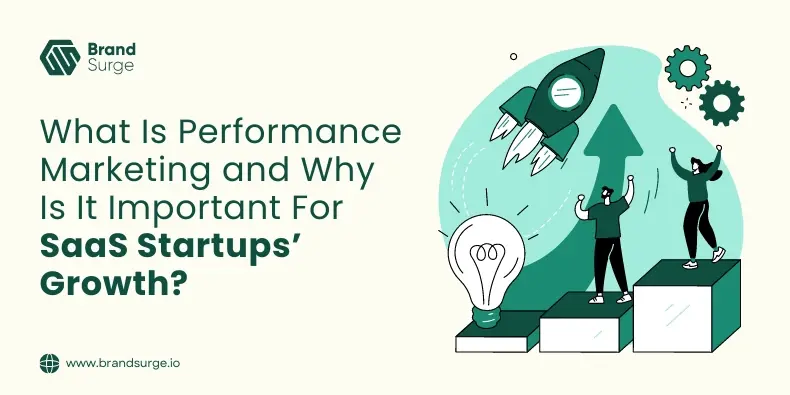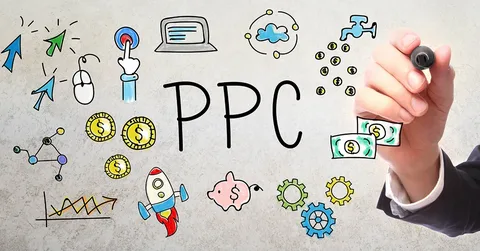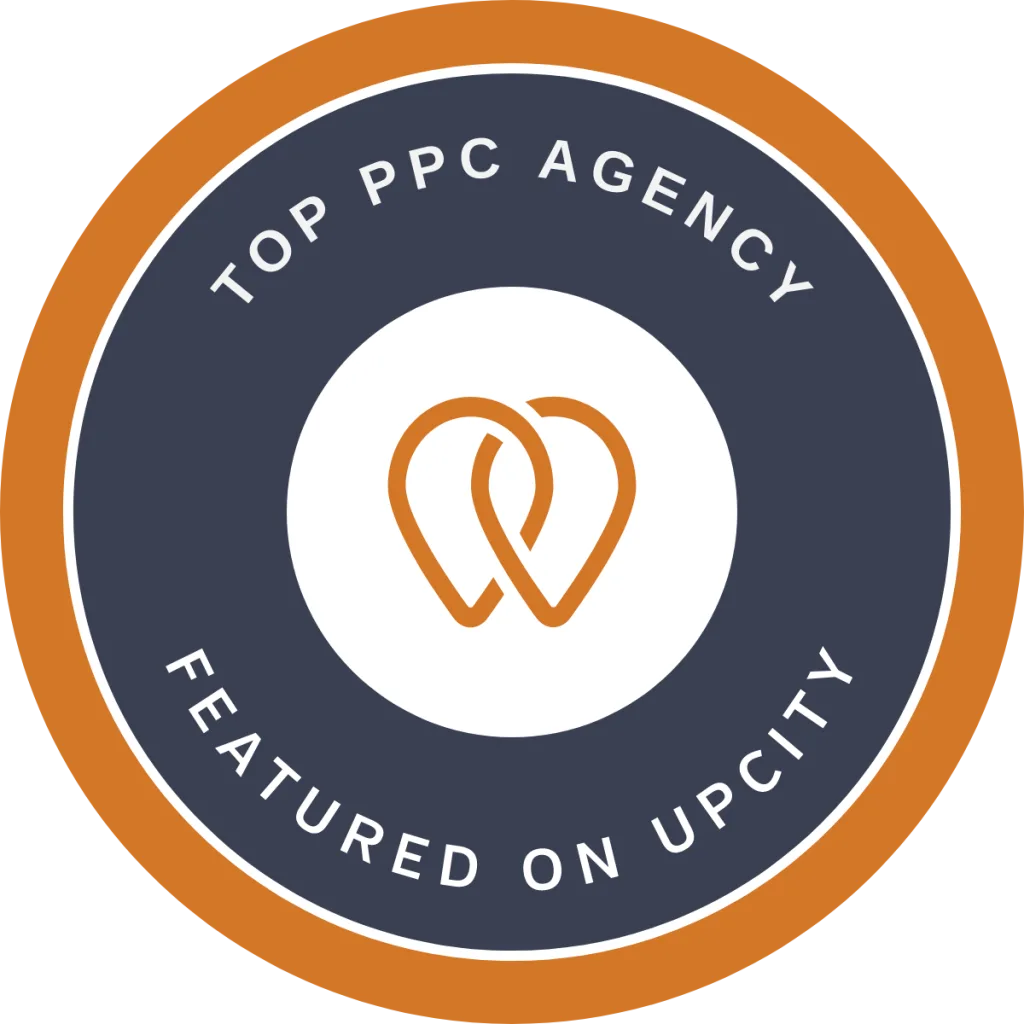In the digital world, where SEO and digital marketing services rule the industry, the importance of a well-devised Conversion Rate Optimization (CRO) checklist cannot be overlooked.
A well-implemented CRO services strategy is key to a robust digital marketing strategy, helping your business in converting website visitors into potential customers – and ultimately surging sales.
But…
What is a Conversion Rate Optimization Checklist?
The Conversion Rate Optimization checklist is a guide to essential tasks that help you create a personalized and impactful CRO strategy. Mastering E-commerce PPC Your Guide to Effective Budget Management Its essence lies in its ability to systematically guide your efforts in optimizing your website and marketing strategies to increase conversions. It’s a comprehensive tool that simplifies the complex process of CRO, offering a comprehensive approach to improving your website’s performance.”.
So let’s delve into the details of a CRO checklist and explore how conversion rate optimization experts implement it to get maximum results.
The checklist can be broken down into several integral parts, each focusing on a specific area of your website or marketing campaign.
A strategic approach to each of these areas can significantly enhance your website’s conversion rate.
You can create the strategy on your own or choose to work with a branding services agency that would create a customized strategy for you.
What are the Primary Elements of a CRO Checklist?
Here’s a checklist for Conversion Rate Optimization (CRO):
Understand Your Audience
Before starting with CRO, you should have a clear understanding of your target audience. This includes their demographics, interests, behaviors, and pain points. You can get this information through market research, customer feedback, and web analytics. This information allows you to tailor your website and marketing messages to your audience’s specific needs and preferences.
Set Clear Conversion Goals
What action do you want users to take on your website? This could be making a purchase, signing up for a newsletter, downloading a report, etc. Setting clear conversion goals is the first step in the optimization process and provides a benchmark against which you can measure your success.
Analyze Current Conversion Path
Use web analytics tools to understand the path users take on your website before they convert. Identify the pages they visit, how long they spend on each page, and at what point they leave. This will help you pinpoint any obstacles or bottlenecks that are preventing conversions.
Improve Website Design and User Experience (UX)
A well-designed website that’s easy to navigate can greatly improve your conversion rate. Focus on creating a clean, clutter-free design, and ensure that all information is easy to find. Also, make sure your site loads quickly, as slow load times can force users to leave a website.
Optimize Landing Pages
Each landing page should be focused, free of distractions, and centered around a single conversion goal. Make sure the copy is compelling, the visuals are engaging, and the CTA is clear and strong.
Use Strong Call-to-Actions (CTAs)
Your CTAs should be clear, concise, and compelling. They should encourage users to take immediate action. A/B testing can be used to identify the most effective CTAs.
Ensure Mobile Optimization
With the rise in mobile browsing, it’s crucial to ensure your website and all its elements are mobile-friendly. A site that’s difficult to navigate on mobile can lead to high bounce rates and lost conversions.
Enhance Website Speed
Slow loading times can frustrate users and lead to high bounce rates. Optimize images, reduce server response times, and minimize redirects to improve page load speed.
Implement A/B Testing
Test different versions of your web pages, CTAs, landing pages, etc., to identify what works best. This can provide valuable insights into user preferences and behavior.
Simplify Checkout Process
The easier it is for users to complete a purchase, the more likely they are to convert. Reduce the number of steps required, offer guest checkout options, and ensure your payment process is secure and easy to understand.
Leverage Trust Signals
Display customer testimonials, reviews, and security badges to build trust with your audience. Trust signals can reassure potential customers and make them more comfortable with converting.
Personalize User Experience
Use the data you’ve gathered about your users to provide personalized experiences. This can be as simple as using their name, or as complex as providing personalized product recommendations based on their browsing history.
Use Heatmaps and Click Tracking
These tools can provide valuable insights into how users interact with your website. Understand where they’re clicking, how far they’re scrolling, and what sections of your website are getting the most attention.
Analyze and Iterate
CRO is not a one-time process. Continuously analyze your results, learn from your tests, and make changes based on what you’ve learned.
Consider User Feedback
User feedback can provide invaluable insights into what’s working and what’s not on your website. Use surveys, feedback forms, and user testing to gather this information and use it to inform your CRO strategy.
Meanwhile, these are some things you should definitely make sure to tick off your list when creating a CRO strategy.
Looking for tips?
How Can You Enhance Your CRO Strategy?
Combining different digital marketing strategies like SEO and PPC for lead generation advertising into your CRO strategy can be a game-changer.
It will help you fully target your specific audience segments, bringing in more qualified traffic and thereby improving conversion rates.
Moreover, you’ll get easier access to your required audience with relevant keywords and qualified leads with PPC lead generation, so you can easily convert them into customers.
Remember, conversion rate optimization is an ongoing process that requires regular testing and optimization. Always look for ways to improve and evolve your strategy based on your results and changing user behaviors.
Let our conversion rate optimization experts at Brand Surge, a digital marketing agency, help you get the highest number of sales with customized strategies. The Conversion Rate Optimization Checklist is a tool that, when utilized effectively, can revolutionize your conversion rates. It’s a comprehensive guide that helps businesses identify areas of improvement, implement changes, and monitor their impact.
What role do conversion rate optimization experts play in implementing a CRO checklist?
Conversion rate optimization experts provide insights into the creation and implementation of a CRO checklist. They analyze your website and marketing efforts, suggest improvements, and monitor the impact of these changes on your conversion rates.
Can a CRO checklist improve ecommerce PPC campaigns?
Absolutely! A CRO checklist can guide the optimization of ecommerce PPC campaigns. It can help you create more compelling ads, landing pages, and CTAs, leading to better conversion rates.
How often should I revisit my CRO checklist?
CRO is an ongoing process. It’s advisable to revisit your CRO checklist frequently to ensure that it remains effective and aligns with any changes in your business goals, market trends, or customer behaviors.
Conversion rate optimization experts provide insights into the creation and implementation of a CRO checklist. They analyze your website and marketing efforts, suggest improvements, and monitor the impact of these changes on your conversion rates.
Absolutely! A CRO checklist can guide the optimization of ecommerce PPC campaigns. It can help you create more compelling ads, landing pages, and CTAs, leading to better conversion rates.
CRO is an ongoing process. It’s advisable to revisit your CRO checklist frequently to ensure that it remains effective and aligns with any changes in your business goals, market trends, or customer behaviors.

















